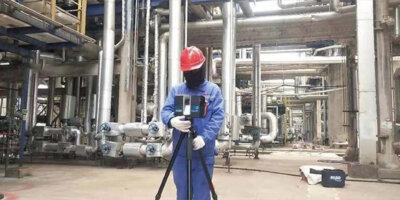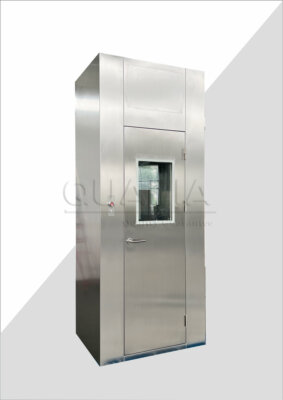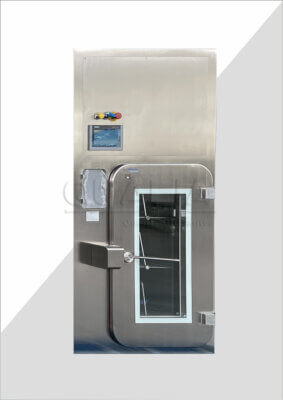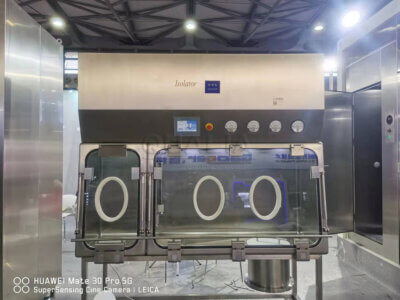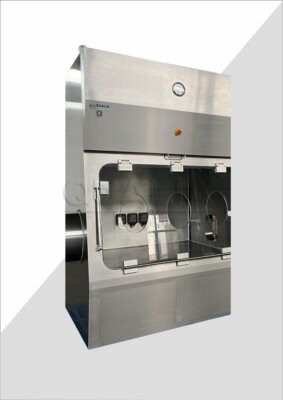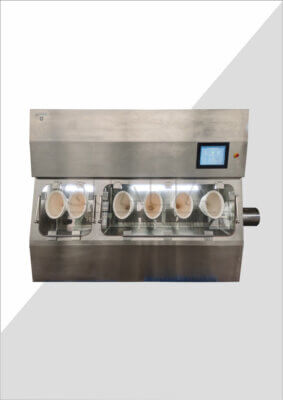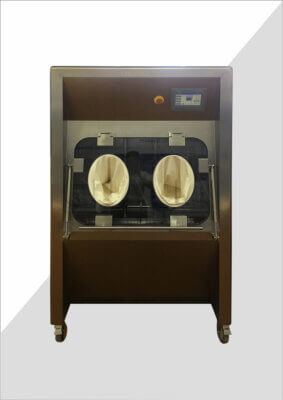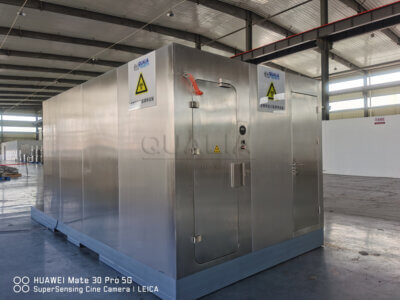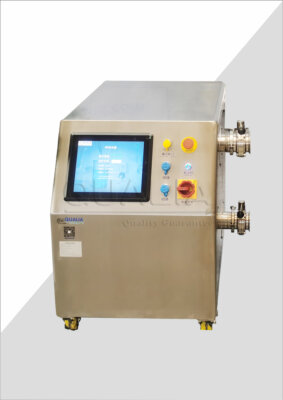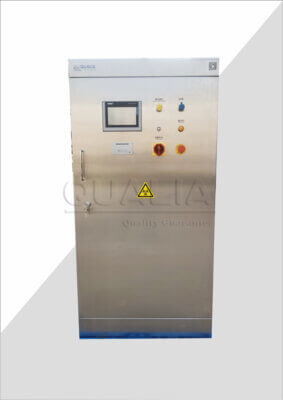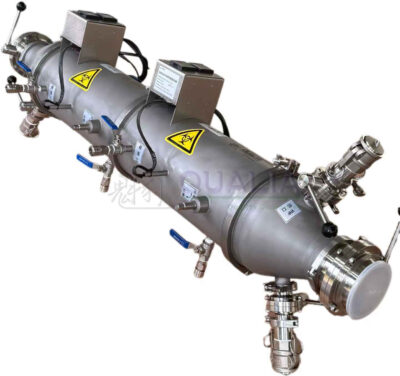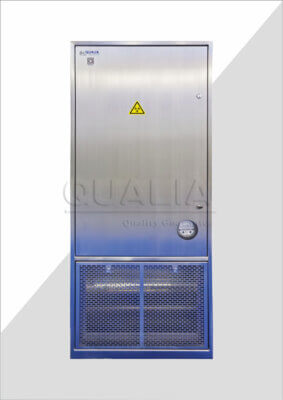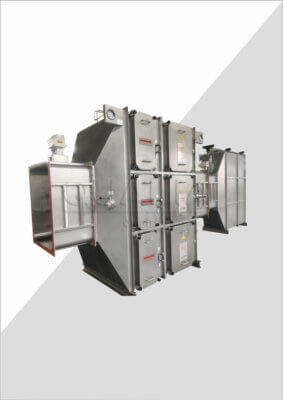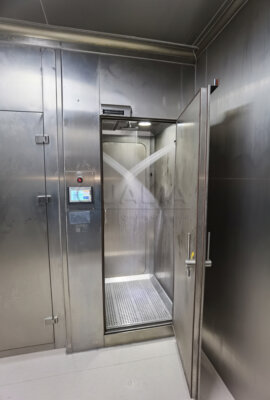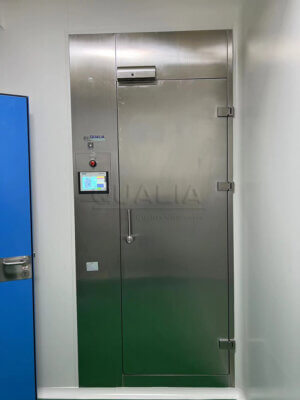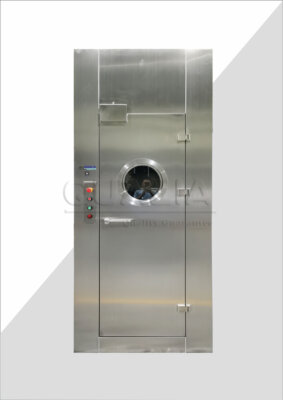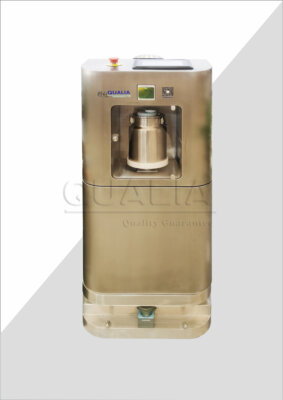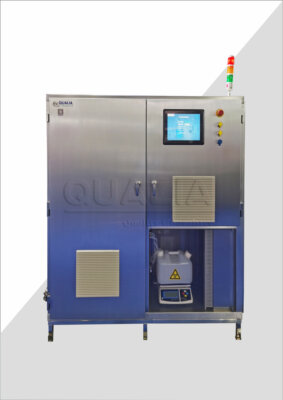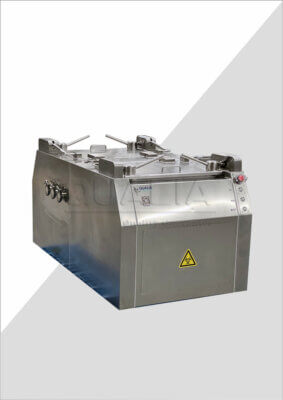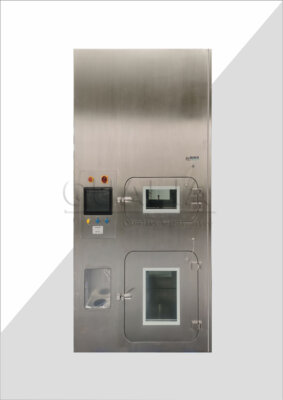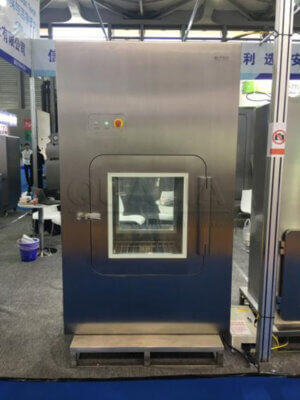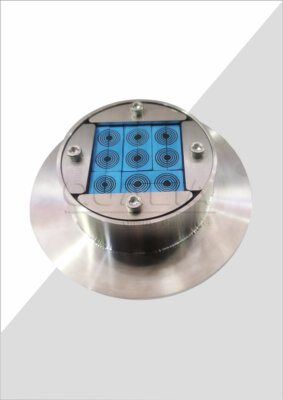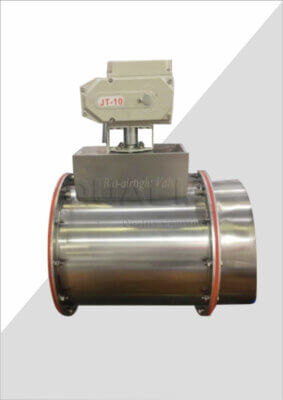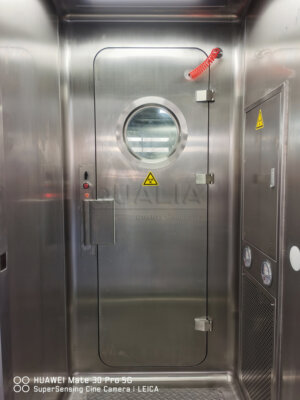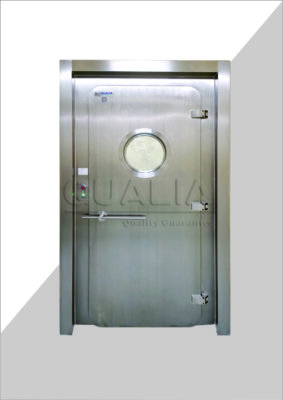In the realm of biosafety, few areas demand as much precision and care as BSL-3 laboratory waste management. As we delve into the intricacies of handling potentially hazardous materials, it becomes clear that proper waste management is not just a matter of protocol—it's a critical component of public health and safety. BSL-3 laboratories work with infectious agents that can cause serious or potentially lethal disease through inhalation, making the proper disposal of waste a paramount concern.
The management of waste in BSL-3 facilities involves a complex interplay of stringent protocols, advanced technologies, and unwavering adherence to safety standards. From the moment a researcher dons their personal protective equipment to the final stages of waste decontamination, every step is carefully orchestrated to minimize risk and maximize safety. This article will explore the best practice guidelines for BSL-3 waste management, offering insights into the procedures that keep both laboratory personnel and the general public safe from potentially dangerous pathogens.
As we transition into the core of our discussion, it's important to recognize that BSL-3 waste management is not a static field. It continuously evolves with new research, technological advancements, and regulatory updates. The guidelines we'll explore are the result of years of scientific study, practical experience, and collaborative efforts within the biosafety community. They represent the current gold standard in laboratory safety practices.
BSL-3 laboratory waste management guidelines are the cornerstone of biosafety protocols, designed to prevent the release of potentially infectious agents and protect both laboratory workers and the environment from exposure to hazardous biological materials.
What are the fundamental principles of BSL-3 waste classification?
When it comes to BSL-3 laboratories, waste classification is the foundation upon which all subsequent management practices are built. Understanding the different types of waste generated in these high-containment facilities is crucial for implementing effective disposal strategies.
At its core, BSL-3 waste classification revolves around categorizing materials based on their potential for infectivity and the risk they pose to human health and the environment. This classification system ensures that each type of waste is handled and disposed of in a manner commensurate with its hazard level.
The classification process in BSL-3 facilities is meticulous and involves a thorough assessment of all materials leaving the containment area. It's not just about identifying what's hazardous; it's about understanding the specific nature of the hazard and tailoring the disposal method accordingly.
All waste generated within a BSL-3 laboratory is considered potentially infectious and must be decontaminated before leaving the facility, regardless of its apparent risk level.
| Waste Type | Description | Disposal Method |
|---|---|---|
| Liquid Biohazardous | Culture media, blood samples | Chemical disinfection or autoclaving |
| Solid Biohazardous | Petri dishes, pipette tips | Autoclaving |
| Sharps | Needles, scalpels | Puncture-resistant containers, then autoclaving |
| Mixed Hazardous | Radioactive biological waste | Specialized treatment required |
In conclusion, the classification of waste in BSL-3 laboratories is a critical first step in the waste management process. It sets the stage for all subsequent handling procedures and ensures that each type of waste is treated with the appropriate level of caution. By adhering to strict classification guidelines, laboratories can maintain the highest standards of safety and compliance.
How should liquid waste be handled in BSL-3 environments?
Liquid waste management in BSL-3 laboratories is a critical aspect of maintaining biosafety standards. These fluids, which can range from culture media to blood samples, often contain the highest concentration of potentially infectious agents and require particular attention in their handling and disposal.
The primary concern with liquid waste is its potential for splashing or aerosolization, which could lead to contamination of surfaces or exposure of personnel. Therefore, the handling of liquid waste involves a series of carefully designed steps to minimize these risks.
Proper management of liquid waste begins at the point of generation. Researchers must be trained to handle these materials with extreme care, using appropriate containment devices and personal protective equipment. The journey of liquid waste from the work area to its final disposal is a carefully orchestrated process that leaves no room for error.
All liquid waste in BSL-3 laboratories must undergo chemical disinfection or heat inactivation before being released from the containment area, ensuring that no viable infectious agents are discharged into the general waste stream.
| Liquid Waste Type | Initial Containment | Treatment Method | Final Disposal |
|---|---|---|---|
| Cell Culture Media | Sealed flasks | Chemical disinfection | Sewer system after pH neutralization |
| Blood Samples | Leak-proof containers | Autoclaving | Incineration |
| Viral Suspensions | Biosafety cabinets | Chemical disinfection followed by autoclaving | Specialized biohazard disposal |
In conclusion, the handling of liquid waste in BSL-3 environments requires a combination of careful planning, proper equipment, and strict adherence to protocols. By treating all liquid waste as potentially infectious and following rigorous decontamination procedures, laboratories can effectively mitigate the risks associated with these materials. This approach not only protects laboratory personnel but also safeguards the broader community and environment from potential exposure to hazardous biological agents.
What are the best practices for solid waste decontamination?
Solid waste decontamination in BSL-3 laboratories is a crucial process that demands precision and adherence to strict protocols. This category of waste includes a wide range of materials, from used personal protective equipment to contaminated laboratory consumables, all of which must be rendered safe before leaving the containment area.
The cornerstone of solid waste decontamination in BSL-3 settings is autoclaving. This process uses high-pressure steam to achieve sterilization, effectively inactivating all microorganisms present on or within the waste materials. However, the efficacy of autoclaving depends on several factors, including temperature, pressure, and exposure time.
Beyond autoclaving, there are other methods of solid waste decontamination that may be employed depending on the nature of the waste and the specific pathogens involved. These can include chemical disinfection, incineration, or a combination of methods to ensure complete sterilization.
All solid waste generated in a BSL-3 laboratory must be decontaminated by validated methods before it can be removed from the containment area, with autoclaving being the most common and reliable method for achieving sterilization.
| Waste Item | Decontamination Method | Validation Procedure | Disposal Route |
|---|---|---|---|
| Plastic Pipettes | Autoclaving | Biological indicators | Recycling after verification |
| Contaminated PPE | Autoclaving | Chemical indicators | General waste after verification |
| Glass Containers | Chemical disinfection followed by autoclaving | Spore strips | Specialized glass disposal |
| Paper Towels | Autoclaving | Temperature-sensitive tape | Incineration |
In conclusion, solid waste decontamination in BSL-3 laboratories is a multi-step process that requires careful consideration of the waste type, the pathogens involved, and the most appropriate sterilization method. By following best practices and regularly validating decontamination procedures, laboratories can ensure that all solid waste is safely processed before leaving the containment area. This rigorous approach is essential for maintaining the integrity of the biosafety system and protecting both laboratory personnel and the wider community.
How are sharps and other hazardous materials managed?
The management of sharps and other hazardous materials in BSL-3 laboratories presents unique challenges that require specialized handling and disposal procedures. Sharps, which include needles, scalpels, and broken glass, pose not only a biological hazard but also a physical one, necessitating extra precautions in their management.
In BSL-3 environments, the QUALIA approach to sharps management emphasizes the use of engineering controls and safe work practices to minimize the risk of injury and exposure. This includes the use of puncture-resistant containers, safety-engineered devices, and proper training for all personnel handling these materials.
The journey of a sharp from its point of use to final disposal is carefully tracked and documented. Each step is designed to prevent accidental exposure and ensure complete decontamination before the material leaves the containment area.
All sharps and hazardous materials in BSL-3 laboratories must be collected in designated, puncture-resistant containers and undergo decontamination processes specific to their composition before being removed from the facility.
| Hazardous Material | Collection Method | Treatment Process | Final Disposal |
|---|---|---|---|
| Needles and Syringes | Puncture-resistant containers | Autoclaving | Incineration |
| Broken Glass | Rigid, leak-proof containers | Chemical disinfection followed by autoclaving | Specialized glass recycling |
| Chemical-contaminated Sharps | Chemical-resistant containers | Chemical neutralization and autoclaving | Hazardous waste facility |
| Radioactive Sharps | Lead-lined containers | Decay storage followed by autoclaving | Radioactive waste disposal |
In conclusion, the management of sharps and hazardous materials in BSL-3 laboratories requires a comprehensive approach that addresses both biological and physical risks. By implementing robust collection systems, specialized treatment processes, and stringent disposal protocols, laboratories can effectively mitigate the dangers associated with these materials. This multi-faceted strategy ensures the safety of laboratory personnel and prevents the release of potentially harmful agents into the environment, upholding the highest standards of biosafety and public health protection.
What role does documentation play in BSL-3 waste management?
Documentation in BSL-3 waste management is not merely a bureaucratic exercise; it is a critical component of the safety and compliance framework. Proper record-keeping serves multiple purposes, from ensuring regulatory compliance to providing a trail for quality control and improvement of waste management practices.
In the context of BSL-3 laboratories, documentation begins with the generation of waste and continues through every step of its handling, treatment, and disposal. This comprehensive approach creates a verifiable chain of custody for all hazardous materials, allowing for accountability and traceability in case of any incidents or audits.
The importance of meticulous documentation cannot be overstated. It not only demonstrates compliance with regulatory requirements but also plays a crucial role in continuous improvement of waste management protocols. By analyzing trends and patterns in waste generation and disposal, laboratories can identify areas for optimization and enhance their overall biosafety practices.
Accurate and detailed documentation of all waste management activities in BSL-3 laboratories is mandatory and serves as a critical tool for regulatory compliance, quality assurance, and process improvement.
| Documentation Type | Purpose | Frequency | Responsible Party |
|---|---|---|---|
| Waste Generation Log | Track types and quantities of waste produced | Daily | Laboratory Personnel |
| Autoclave Run Records | Verify sterilization efficacy | Each cycle | Biosafety Officer |
| Chemical Disinfection Logs | Document treatment of liquid waste | Per treatment | Designated Staff |
| Waste Disposal Manifests | Track offsite disposal of treated waste | Per shipment | Facility Manager |
| Training Records | Ensure personnel competency | Annual and as needed | Safety Coordinator |
In conclusion, documentation plays a pivotal role in the effective management of waste in BSL-3 laboratories. It serves as the backbone of the waste management system, providing a comprehensive record of all activities related to the handling and disposal of hazardous materials. By maintaining detailed and accurate documentation, laboratories not only ensure compliance with regulatory requirements but also create a foundation for continuous improvement of their waste management practices. This commitment to thorough record-keeping ultimately contributes to the overall safety and efficiency of BSL-3 operations.
How do emergency protocols integrate with waste management procedures?
Emergency protocols in BSL-3 laboratories are intricately linked with waste management procedures, forming a crucial nexus in the overall biosafety framework. These protocols are designed to address unforeseen circumstances that may disrupt normal waste handling routines or pose immediate risks to personnel and the environment.
The integration of emergency protocols with waste management procedures begins with comprehensive planning and risk assessment. This involves identifying potential scenarios that could lead to the release of hazardous materials and developing specific response strategies for each situation.
Training plays a pivotal role in this integration. All personnel working in BSL-3 environments must be thoroughly versed in both standard waste management procedures and emergency protocols. This dual knowledge ensures that in the event of an incident, staff can respond swiftly and appropriately, minimizing potential exposure and contamination risks.
Emergency protocols in BSL-3 laboratories must include specific provisions for the safe containment and decontamination of waste materials in the event of spills, equipment failures, or other unforeseen incidents that may compromise standard waste management procedures.
| Emergency Scenario | Immediate Action | Waste Management Implication | Follow-up Procedure |
|---|---|---|---|
| Biohazardous Spill | Contain and decontaminate | Treat all materials as high-risk waste | Incident report and protocol review |
| Autoclave Failure | Secure waste in secondary containment | Implement alternative decontamination method | Equipment repair and validation |
| Power Outage | Secure all waste containers | Prioritize waste treatment upon power restoration | Review backup power systems |
| Exposure Incident | Initiate first aid and decontamination | Segregate potentially contaminated materials | Medical evaluation and incident investigation |
In conclusion, the seamless integration of emergency protocols with waste management procedures is essential for maintaining the highest standards of safety in BSL-3 laboratories. This integration ensures that even in unexpected situations, the handling and disposal of potentially hazardous waste remain controlled and contained. By preparing for various scenarios and training personnel to respond effectively, laboratories can minimize risks and maintain the integrity of their biosafety systems. This comprehensive approach not only protects laboratory workers but also safeguards the broader community from potential exposure to dangerous pathogens.
What technological advancements are shaping the future of BSL-3 waste management?
The landscape of BSL-3 waste management is continuously evolving, driven by technological innovations that promise to enhance safety, efficiency, and sustainability. These advancements are reshaping how laboratories approach the challenges of handling and disposing of potentially hazardous materials.
One of the most significant areas of progress is in automation and robotics. Advanced systems are being developed to handle waste materials with minimal human intervention, reducing the risk of exposure and improving consistency in waste processing. These automated solutions range from sophisticated waste sorting systems to robotic arms capable of performing complex decontamination procedures.
Another frontier in BSL-3 waste management technology is the development of more efficient and environmentally friendly decontamination methods. Novel sterilization techniques, such as cold plasma technology and advanced oxidation processes, offer the potential for more effective pathogen inactivation with reduced energy consumption and chemical usage.
Emerging technologies in BSL-3 waste management are focused on minimizing human exposure, improving decontamination efficacy, and reducing the environmental impact of waste treatment processes, with automation and advanced sterilization techniques leading the way.
| Technology | Application | Benefits | Challenges |
|---|---|---|---|
| AI-powered Waste Sorting | Automated waste classification | Increased accuracy, reduced human error | High initial investment |
| Cold Plasma Sterilization | Non-thermal decontamination | Effective against resistant pathogens, lower energy use | Limited scalability for large volumes |
| RFID Tracking Systems | Real-time waste monitoring | Improved traceability, enhanced inventory management | Requires comprehensive IT infrastructure |
| Microwave-based Sterilization | Rapid waste treatment | Faster processing times, reduced chemical use | May not be suitable for all waste types |
In conclusion, technological advancements are poised to revolutionize BSL-3 waste management practices. From AI-driven sorting systems to novel sterilization methods, these innovations promise to enhance safety, efficiency, and sustainability in high-containment laboratories. As these technologies mature and become more widely adopted, they will play a crucial role in shaping the future of biosafety practices. Laboratories that embrace these advancements will be better equipped to handle the challenges of working with dangerous pathogens while minimizing risks to personnel and the environment. The BSL-3 laboratory waste management guidelines will undoubtedly evolve to incorporate these technological innovations, ensuring that best practices keep pace with scientific progress.
Conclusion
As we conclude our exploration of BSL-3 waste management best practices, it's clear that this field stands at the intersection of rigorous scientific protocol and cutting-edge innovation. The guidelines we've discussed form the backbone of safety practices in high-containment laboratories, ensuring that potentially hazardous materials are handled with the utmost care and precision.
From the fundamental principles of waste classification to the intricate procedures for handling liquid and solid waste, every aspect of BSL-3 waste management is designed to minimize risk and maximize safety. The careful attention paid to sharps and other hazardous materials underscores the comprehensive nature of these protocols, leaving no room for oversight in the pursuit of biosafety.
The role of documentation emerges as a critical thread running through all waste management activities, providing accountability, traceability, and a foundation for continuous improvement. Meanwhile, the integration of emergency protocols with standard waste management procedures ensures that laboratories are prepared to handle unforeseen circumstances without compromising safety.
Looking to the future, technological advancements promise to revolutionize BSL-3 waste management, offering new tools to enhance efficiency, safety, and sustainability. As these innovations are incorporated into established guidelines, they will undoubtedly shape the next generation of biosafety practices.
In essence, BSL-3 waste management is not just about disposing of laboratory waste; it's about safeguarding public health, protecting the environment, and enabling crucial scientific research to proceed safely. By adhering to these best practice guidelines and embracing new technologies, laboratories can continue to push the boundaries of scientific discovery while maintaining the highest standards of safety and responsibility.
As the field continues to evolve, one thing remains constant: the unwavering commitment to safety that defines BSL-3 waste management. It is this dedication that allows vital research to continue, contributing to our understanding of dangerous pathogens and ultimately to the betterment of global health.
External Resources
Biosafety Level 3 – CVMBS Green Labs Resource Guide – This guide provides detailed information on BSL-3 laboratory waste management, including the disposal of pipet tips, the use of disinfectants, and sustainable practices to reduce waste.
Biosafety Level 3 Laboratories – This manual from Stanford University outlines the strict guidelines for waste management in BSL-3 laboratories, emphasizing the need for sterilization of all waste before disposal outside the facility.
BL3 Guidelines – These guidelines from Case Western Reserve University cover specific procedures for handling and disposing of biohazardous waste, including the use of autoclaving and proper labeling of materials.
BSL-3 Laboratory Standard Operating Procedures (SOPs) – This document from the University of Nevada, Las Vegas, details the standard operating procedures for BSL-3 laboratories, including decontamination methods and the handling of infectious waste.
Biological Safety BSL3 Laboratory Manual – Yale University's manual provides comprehensive guidance on waste management, including autoclaving, maintaining autoclave log sheets, and ensuring the cleanliness and organization of the laboratory environment.
Biosafety Level 3 (BSL-3) Laboratories – The Centers for Disease Control and Prevention (CDC) provide guidelines on BSL-3 laboratory operations, including waste management and decontamination procedures to ensure safety and compliance.
Biosafety Level 3 Laboratory Guidelines – This resource outlines the specific guidelines and protocols for managing waste in BSL-3 laboratories at UC Berkeley, including training requirements and emergency procedures.
BSL-3 Waste Management and Disposal – The University of Michigan's guidelines cover the proper disposal of biohazardous waste in BSL-3 laboratories, including procedures for autoclaving, chemical disinfection, and the handling of sharps and other hazardous materials.
Related Contents:
- BSL-3/4 Waste Disposal: Regulatory Guidelines 2025
- Waste Management in Biosafety Isolators
- cRABS Waste Management: Safe Disposal in Sterile Pharma
- BSL-3 Waste Management: Cutting-Edge Equipment
- BSL-3 vs BSL-4: Key Differences in Lab Safety Levels
- BSL-3/4 Safety Inspections: Comprehensive Checklist
- BSL-4 Decontamination: Cutting-Edge Procedures
- BSL-4 Viral Research: Protocols for High-Risk Agents
- Biosafety Barriers: The Hallmarks of BSL-3 and BSL-4 Labs


